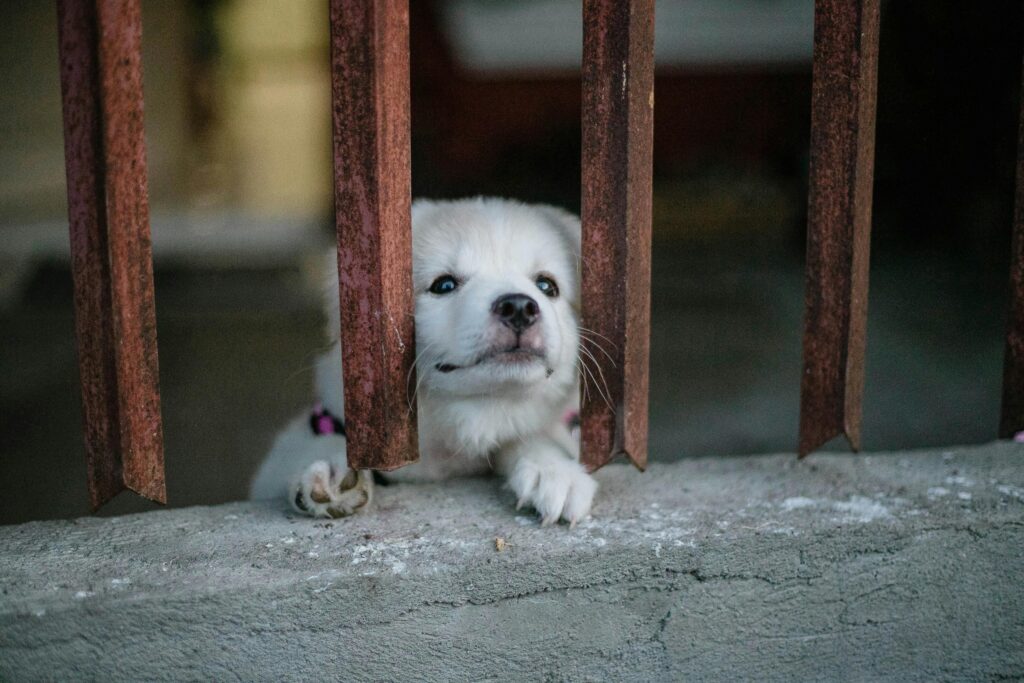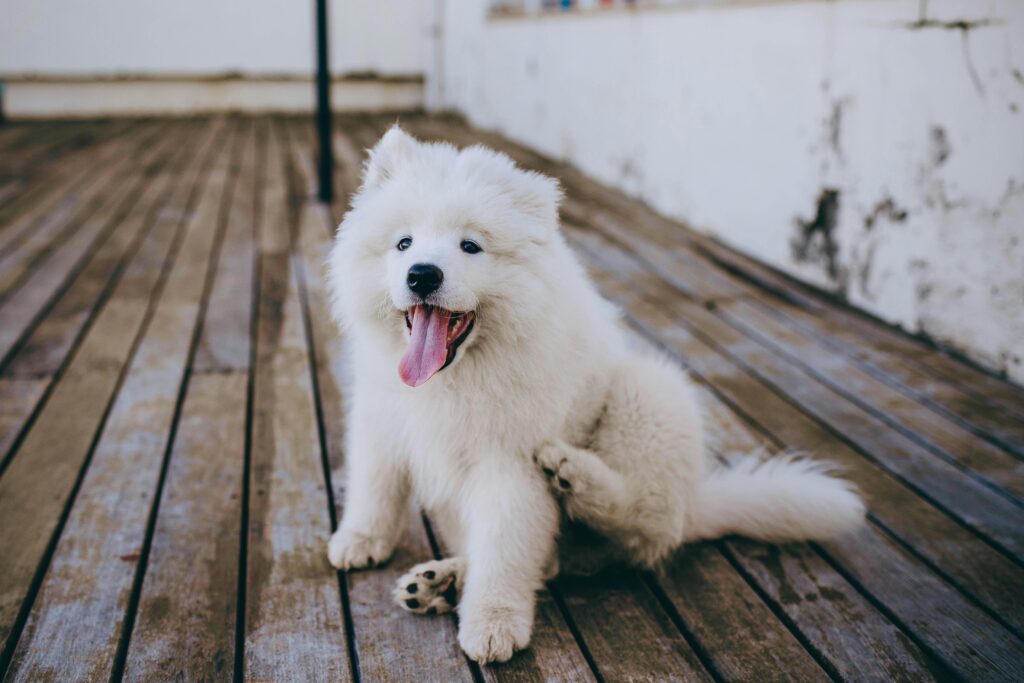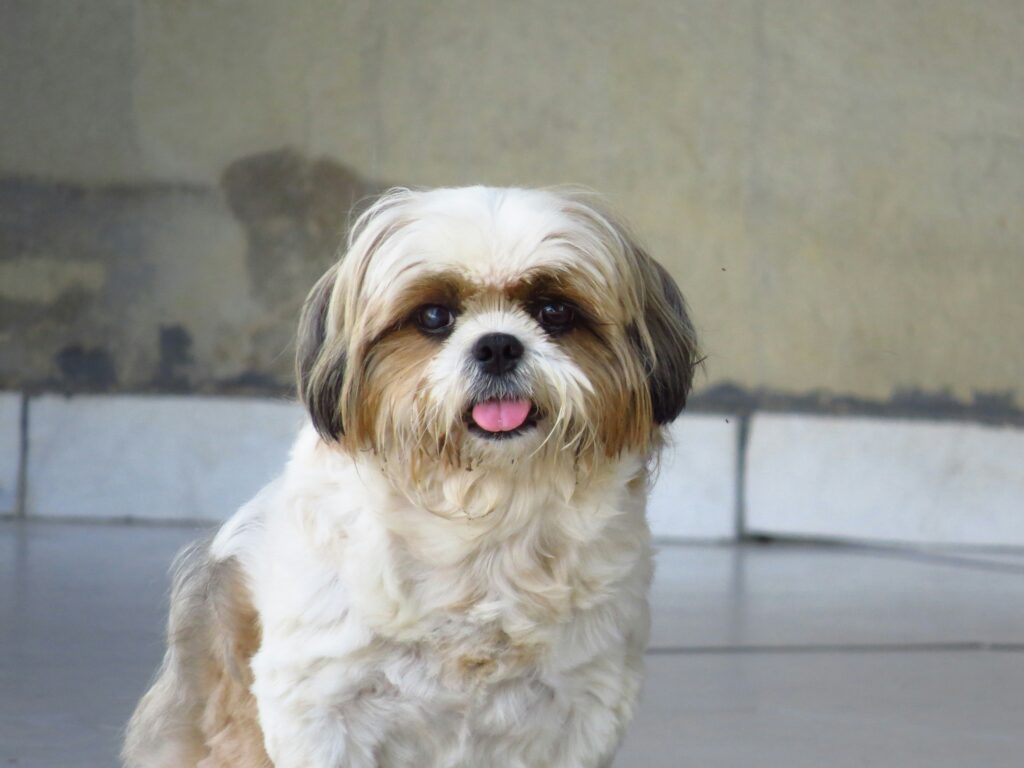Understanding Separation Anxiety in Dogs
Got a four-legged pal who’s a bit too clingy when you step out? Welcome to the gripping world of separation anxiety in dogs—your pup’s way of saying they love you just a tad too much, and they might panic when you’re not around. My Whippet was super clingy to me in particular and put up a real sad face whenever I left home. Now, the Cavapoo is no better. And their eyes say it all. Maple gets super sad when any of our family member leaves home to go anywhere, even if just for less than an hour. And Maple is like, Woah! where have you been all this while? when we get back!!! Ha ha ha…But sometimes, when I travel overseas, it does affect her appetite and she really sulks. Let’s dive into what this is all about and how you can help your worried friend relax.
What is Separation Anxiety in Dogs?
Separation anxiety is a pretty common struggle where your doggo flips out when left by itself. It’s all about that strong bond y’all got—your dog feels lost without you. If they could lodge a police complaint for missing persons, they would do so every ten minutes. Not to boast or anything, but you’re their favorite human, and being apart freaks them out. If your furball starts barking like there’s no tomorrow, chews everything in sight, or leaves surprise puddles inside, or stops eating, they might be waving the red flag of separation anxiety.
Cracking the code of this anxiety is crucial in finding the right way to ease your pup’s stress. By spotting these behavioral clues, you can jump on solutions that smooth things out for your furry friend, upping their happy levels even when you’re not there for belly rubs.
Signs and Symptoms of Separation Anxiety

Being a dog whisperer starts with picking up on the SOS your pet sends when they’re losing their cool solo. Here are some giveaway signs screaming separation anxiety:
| Symptoms | Description |
|---|---|
| Barkfest Bonanza | Non-stop barking or howling when they’re alone |
| Destroyer of Worlds | Furniture, doors, shoes—nothing’s safe |
| Endless Wanderer | Pacing like they’re jogging a marathon indoors |
| Potty Mishaps | Little surprises left inside, house rules ignored |
| Houdini in Training | Attempts at a great escape, tearing at barriers. They think they can look for you and find you. |
Spot these antics when you’re on your way out or once you’re gone? Your pooch is likely feeling the anxiety. Nipping this in the bud with some solid strategies can make your dog feel secure even when they’re flying solo. Plus, find more pawsome advice on wrangling separation anxiety at this ASPCA site.
Factors Contributing to Separation Anxiety
Let’s chat about why some dogs feel like they’re losing their minds when you’re not around. Here we dive into what might make your furry buddy feel all clingy and anxious. Recognizing these things can help you calm their nerves. Here’s a look at what causes dogs to feel bummed out when you’re away:
Breed Predisposition
Some doggos are naturally more likely to feel left out when you leave. Little pooches like French or Toy Poodles cling to their humans like Velcro—they just can’t help it! While every pup’s personality has its flavor, some breeds are hard-wired to freak out more than others. If you’re curious about tiny doggos who don’t mind a little solo time, check out my best small dog breeds list!
Past Experiences
A dog’s past can give big clues about their tense behaviors. If a pup’s been shuffled around or had a rough life full of changes, they might cling tighter to what they know (that’s you). Rescue dogs or pooches with a history of being passed around like a hot potato might show extra nervous energy. Knowing your pup’s past and offering them a cozy, constant home works wonders for their anxious tendencies.
Changes in Routine
Dogs live for routine. Switch things up too much, like changing work hours or moving houses, and you might as well be speaking dog gibberish. Something like a family member suddenly not being around anymore can rattle their cage—literally or figuratively! Since dogs are creatures of habit, it’s wise to ease them into changes and reassure them along the way so their world doesn’t feel like it’s spinning out of control.
By pondering over these separation anxiety triggers in dogs, you can tune into their emotional needs better and help them chill out. Think about their breed’s traits, what they’ve been through, and any routine shake-ups to help your four-legged pal settle in and enjoy their alone time.
Addressing Separation Anxiety
Helping your tiny four-legged buddy tackle separation anxiety isn’t rocket science. You just need to stick to a routine, slowly practice leaving them alone, and give them a bunch of fun things to do to keep their minds busy.
Establishing a Routine
Drag yourself out of bed at the same time every day and stick to a pattern. Feed ’em, walk ’em, and play with ’em at the same times daily. Your little doggie will dig this stability and might chill out a bit when wondering when you’ll hit the door or come back. I wake up every morning and the very first thing I do is to take Maple for a walk, and then when we return, I feed her. This has become her routine.
Gradual Departures
Don’t just disappear on them like magic. Make your escape a bit more like a slow trickle. Start by going out for a min and then slowly push that time longer. Eventually, your doggie will start realizing you’re not ghosting them forever, helping to ease their worry. Most dogs are very observant and they get used to your daily work routine and they get comfortable because they know you will return.
Enrichment Activities
Keep that little brain spinning in your absence with some paw-some activities. Whether it’s tantalizing puzzle toys, tricky treat-feeders, or a treasure hunt for their favorite snacks, these distractions can work wonders to pull their focus off missing you.
Bear in mind, tackling separation anxiety takes a little elbow grease and loads of heart. Working in these tricks and tweaks over time can help your little buddy feel less clingy when you need some alone time.
Training Tricks for Easing Anxiety
Got a pup who hates goodbyes? If your little fur buddy gets the heebie-jeebies when you step out the door, there’s hope! Let’s talk about how you can take some simple steps to help ease the nerves. Here’s a whiff of three handy tricks: making the bad stuff good, easing into alone time, and finding the chill.
Turning Bad into Good
Turning a dog’s world upside down in a good way! This method’s all about flipping the script on how your pooch reacts when left alone. The trick? Make alone time a treat fest! Toss ’em a yummy snack, or give ’em their fave toy just as you’re leaving. Over time, they might even start wagging their tail when they see the signs of you leaving. It’s all about tricking them into thinking, “Solo time? Score!”
Work on this with a sprinkle of patience ’cause good things take time. Your doggo will get the hang of it.
Easy Does It
Think of this as baby steps for pups. The idea is to get your dog used to their own company slowly but surely. Start by leaving for a couple of minutes, then gradually stretch it out. Kinda like how we prepare ourselves for the Monday grind slowly.
Keep them busy with toys or calming gadgets. Make their world a bit more entertaining when you’re out doing human stuff. Nowadays, with technology, installing an indoor camera is great with a mic/speaker is a great way to help you deal with separation anxiety in dogs. Watch them over the camera on your smart phone and speak with them once or twice a day when you are away.
Find the Zen
Teach your mutt to mellow out. A bit of grooming, a gentle rub, or even some doggy-friendly aromas can help dial down those distress levels. Plus, having a chill-out zone at home can give ’em a hideaway when they’re feeling uneasy.
Stringing these relaxation moves into your regular routine can turn those ‘where’s my human?’ moments into ‘all’s good’ ones. Do some research on articles written by qualified vets on dealing with separation anxiety in dogs.
Mix these nifty tricks to help your sidekick tackle that separation anxiety with care and a good dose of humor. Remember, your pooch is one-of-a-kind, so what works for them is literally tailored to their paws-on-the-ground character.
Get Some Backup
When you’re trying to handle your pup’s separation anxiety, calling in the pros might be just the ticket. Folks like behaviorists and trainers are like your furry buddy’s lifeline, ready to help them chill out. And hey, if things get hairy, there are medications out there that your vet could prescribe to take the edge off for the lil’ furball.
Behaviorists and Trainers
These gurus really get into the nitty-gritty of animal antics and can dish out advice catered to your pup’s nerves. They’ll dig into what’s getting your dog all worked up and share ways to make alone time not-so-scary.
It’s smart to pick a behaviorist or trainer who’s seen it all with small breeds and understands the whole anxiety situation. With their help, you can whip up a training game plan that boosts your pet’s morale even when you’re not around.
Medications to the Rescue
If anxiety’s got its claws sunk in deep and regular fixes just aren’t cutting it, medication might be an option in the toolbox. Some calming meds from your vet can turn down the volume on your pup’s jitters when you’re out of sight.
Chatting with a vet about this is a must-do. They’ll size up your dog’s vibes and health to figure out what meds fit like a glove. Plus, they’ll keep an eye on how it goes and tweak things as needed so your pup starts feeling groovy.
Tapping into the wisdom of trainers, behaviorists, and vets gives you a solid plan to help your furry sidekick tackle their separation woes head-on. By getting some professional backup, you’re not just placating your pup’s nerves, but also giving them a happier, healthier life!
Dog Walkers
If you are going to be away for the whole day at work, then it may be a good idea to hire a dog walker or a day care volunteer or student, just to swing by, take your little pooch out for a walk, some play time, and feeding time. This will create a new routine for the little fur baby and with time, the dog will understand that you go our daily at a certain time, and a new friend will be home soon to take him/her out for a walk. This strategy has been successful in dealing with separation anxiety in dogs.
Creating a Comfort Zone Your Dog Will Dig
Helping your little pooch shake off that separation anxiety can be as simple as making their space a cozy haven. You’ll need some comfy spots, fun toys, and a few stress-busters. Here’s how to do it:
Chill Zones
Set up a chill zone for your dog where they can feel snug and secure while you’re out. Think about a spot that’s nice and quiet, with their go-to blanket or bed, maybe even a crate or a special room. A place where they know it’s cool to let their furry guard down. Add in some treats or toys now and then, turning this space into their personal doggy paradise when life’s little stresses come barking.
Fun Toys for Busy Paws
A stash of awesome toys will keep your furry buddy busy and those anxious feelings at bay when you step out. Pick out toys that give treats, get their brain buzzing, or get them on the move. Swap the toys around every now and then to keep things fresh and exciting. Trust us, your dog will love the variety and the fun won’t get old.
Calm Down Helpers
Some pups need a little extra help unwinding. Get some calming aids like slick collars, or snuggly vests that give them a comforting hug. These gadgets can ease nerves with scents or gentle pressure. Just swing by your vet’s office for a chat about which calming hack might be the best fit for your pup.
By bringing together safe spots, cool toys, and calming gadgets, you’re setting the stage for a home that makes your pooch feel secure and at ease. Adding these bits and bobs into their everyday life can make a world of difference for handling anxiety. Keep in mind, all dogs dance to their own beat, so hang in there and watch what makes that little tail wag.
Patience and Consistency
Helping tiny Max or Bella chill out when you’re out isn’t a quick-fix, but patience mixed with consistency can pave the way. Getting into a groove with a routine and popping confetti for those little wins can work wonders in easing your pup’s anxiety.

Why Training Regularly Matters
Keeping a steady hand on the training wheel is gold when dealing with your little buddy’s separation anxiety. You set rules, enforce ’em, and voilà! Your furball starts feeling more at ease flying solo. Using treats or heaps of praise during training can link all those good vibes with being alone.
Consistency is your best pal—not just in training but in all interactions with your pup. A routine as predictable as clockwork can mellow out anxiety triggers and deepen your bond with your four-legged pal. Every baby step counts, so keep patience in your pocket and don’t forget to give attention to when they do well.
Cheering the Little Victories
Celebrate like it’s a national holiday for every small step in tackling your pup’s separation jitters. Acknowledging even baby-sized good deeds bolsters confidence and keeps progress alive.
Keeping tabs on these small oversnaps lets you see how far your furball’s come and what strategies hit the mark. Maybe they managed a short solo nap without flipping or stayed cool in response to a cue—pat yourself—and your buddy—on the back! These moments are what keep both you and Fido focused on the goal—a less anxious and more independent fur friend.
Stick with patience and some consistency magic, and you’ll guide your little bundle through their separation anxiety journey. Each little win gets your cuddly best friend here to a place of zen, tightening your bond and boosting their chill factor.
Your Role as a Loving Pet Parent
As the parent of your little pooch, You’ve got the job of calming your best friend’s nerves when you’re not there. It’s all about positive vibes and trust – even when you step out. And talking of best friends, take a peek at my post on best friends for life.
The Power of Positive Vibes
Time to make your pup feel like a superstar with some positive vibes! Think rewards – treats, belly rubs, playing fetch – for when they’re chill. The goal? Swap those sad puppy eyes with a wagging tail as you’re heading out.
You’ve gotta be on your game and keep this going day in, day out! The more you celebrate their cool, calm, and collected moments, the more your furry pal will start seeing alone-time as no big deal. Your little buddy will soon be handling it like a pro.
Trust: The Secret Sauce
Your pooch needs to know you’ve got their back. Make time for loads of fetch, cuddles, and walks. The closer you guys are, the easier it’ll be for them when you need to jet. Hang in there—you’re building a safety net.
Dogs are kind of like humans—they appreciate a routine. Like when breakfast hits the table, and playtime rolls around, and maybe a cozy nap. Give them a set schedule so they know exactly what’s coming up in their day. With a bit of predictability, your pup can chill, even when you’re off doing your human stuff.
Stick with the flow, shower your pup with love, and trust that you’re making it happen. You’re the hero in your dog’s world, helping them feel safe, sound, and ready to face the world solo whenever you step out the door. You’re doing a wicked awesome job. Keep it up, pet parent! For more, here is a good article I came across on dealing with separation anxiety in dogs.



